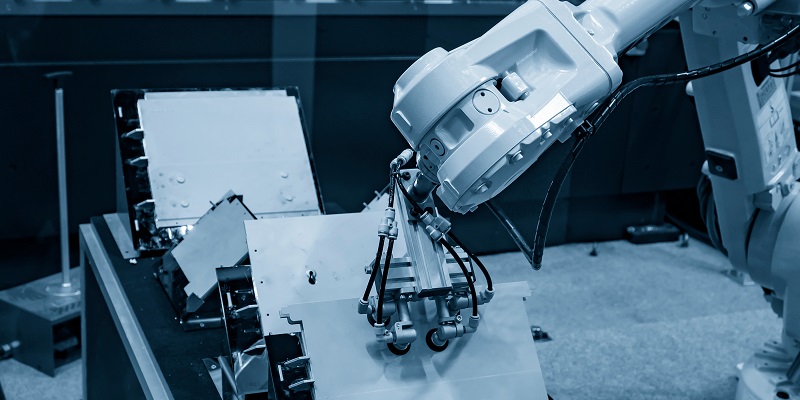In modern industries, computer-based control systems are widely used to operate production systems. These systems allow for precise and efficient control of large-scale production processes. Among the most important components of these control systems are industrial robots that perform specific tasks in batches, such as clothing production, computer chips, or baked goods. The control techniques used for these robots are critical to the efficiency and productivity of the entire manufacturing process.
Control techniques for industrial robots
The commonly used control technique for industrial robots is iterative learning control (ILC). ILC is a feedback control method that uses past performance data to improve control performance over time. This method is especially suitable for repetitive tasks, such as those performed in batch production.
Examples of industries using ILCs
The use of ILC is widespread in various industries such as the semiconductor industry, food manufacturing, and textile industry. In semiconductor manufacturing, robots are used for wafer fabrication, where small variations in the production process can cause significant yield losses. In the textile industry, ILC is used to control the tension of textile fabric during production to ensure the quality of the final product.
Limitations of current ILC systems
Despite the widespread use of ILC, current systems have two significant limitations. The first limitation is that they rely on a learning strategy called the proportional-type update rule (PTUR). The PTUR has been the dominant approach used to improve the performance of ILC systems. However, in situations that require high precision, the PTUR can be unsatisfactory. The second limitation is related to the ability of the ILC system to converge to the desired output. Existing methods for improving the convergence rate often turn out to be unsatisfactory in situations that require high precision.
There has been a breakthrough in the ILC system
In a recent breakthrough, a group of scientists has proposed a new technique that uses the fractional power update rule (FPUR) to enhance the performance potential of single-input-single-output linear ILC systems. The researchers conducted experiments on a robot that was used to drill holes in a metal surface. They compared the performance of the traditional PTUR with the new FPUR. The results showed that the FPUR method outperformed the PTUR method in terms of both convergence rate and precision.
Nonlinear update methods for learning and achieving desired output
The scientists investigated approaches beyond PTUR that utilized nonlinear update methods to learn and reach the desired output. Nonlinear update methods allow the control system to adapt to the changing dynamics of the system being controlled. The researchers found that this approach could significantly improve the effectiveness of industrial control systems.
Development of a new FPUR method
The team developed a new FPUR method inspired by newer finite-time control (FTC) and terminal sliding mode control (TSMC) strategies. These strategies are nonlinear control techniques used to improve the transient response and robustness of control systems. The new FPUR method uses a fractional term for updating, leading to a faster convergence rate.
Traditional PTUR uses a linear term for the tracking error to update the control input. On the other hand, FPUR uses a fractional term for updating. This fractional term can adapt to the changing dynamics of the system, leading to faster convergence and higher precision.
The proposed technique could potentially be used in other repetitive systems such as autonomous vehicles, unmanned aerial vehicles, and rehabilitation robots. The FPUR method has the potential to significantly improve the performance of these systems. This study has demonstrated, for the first time, the use of the FPUR for ILC in single-input-single-output linear systems.
The use of ILC is critical to the efficiency and productivity of modern industries. However, the limitations of current ILC systems have led to the development of new control techniques such as the FPUR. The FPUR is a nonlinear update method that improves the performance potential of single-input-single-output linear ILC systems. This development could have significant implications for future advancements in industrial control systems.

